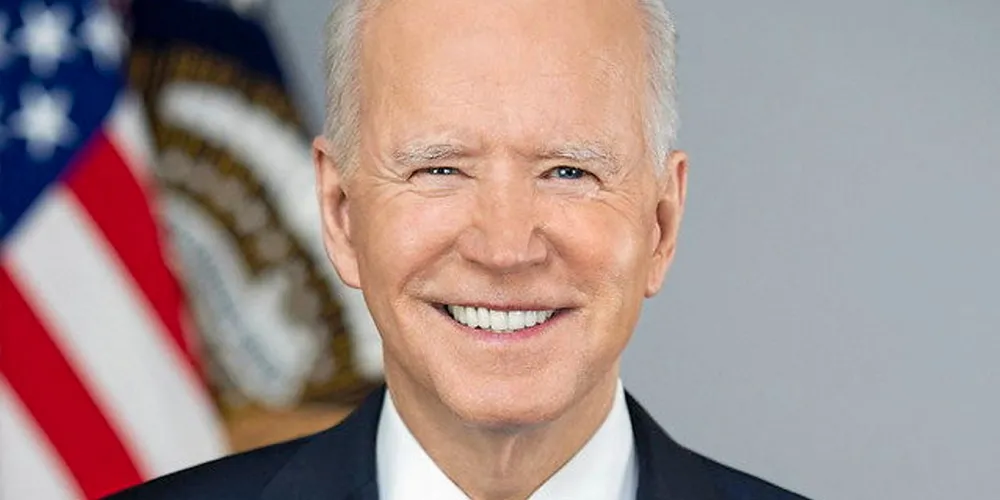Biden signs 9-state offshore wind supply chain pact while funding $72m towards manufacturing
Administration unveils several initiatives aimed at addressing needs of flailing US sector as rising costs and interest rates continue to bite

US President Joe Biden’s administration has responded to the offshore wind industry’s pleas for support with a series of announced supply chain initiatives aimed at spurring regional collaboration and advanced manufacturing.
The White House announced Thursday that nine east coast states and four federal agencies signed a memorandum of understanding (MoU) to strengthen regional offshore wind supply chain development cooperation.
Global headwinds of high inflation and interest rates as well as supply chain turmoil have buffeted the US sector particularly hard as it struggles to develop.
The MoU extends the administration’s Federal-State Offshore Wind Implementation Partnership launched last year, and will enable coordinated expansion of manufacturing facilities, port capabilities, workforce development, and other key supply chain elements.
Supply chain development is typically tied to individual state offtake procurement, risking redundancies that could lead to sustained higher sector costs as well as “uncertainty with investors whether investment in one state would be recognised equally elsewhere”, according to trade group Business Network for Offshore Wind (BNOW).
“The time is right to maximise the US market’s attractiveness by driving regional collaboration,” said BNOW CEO Liz Burdock.
“Building partnerships between states will foster more investments in new manufacturing facilities and strengthen existing projects, leading to more job growth and a more robust domestic supply chain needed to build the offshore wind industry and hit the nation’s clean energy goals.”
State signatories include Connecticut, Maine, Maryland, Massachusetts, New Hampshire, New Jersey, New York, North Carolina, and Rhode Island. All are led by governors who are Democrats like Biden except Republican Chris Sununu of NEw Hampshire.
Federal agencies involved, including the Departments of Energy, the Interior, Commerce, and Transportation, “will provide technical support to the states and help develop a shared East Coast procurement and leasing timeline to facilitate greater alignment” and improve coordination through future solicitations, according to the administration.
The agreement specifically aims to incentivise development of US-built vessels and steel production across multiple regions while addressing the needs of fixed-bottom and floating wind on all three coasts.
The White House said the MoU supports “broader efforts of the Federal-State Offshore Wind Implementation Partnership to fill national supply chain gaps identified in the US Offshore Wind Supply Chain Roadmap, which can unlock tens of thousands of good-paying jobs throughout the country.”
Advanced manufacturing
The administration is backing its plans for supply chain development with $72m in funds for innovative manufacturing processes for offshore and onshore wind and hydropower.
The administration forecasts demand for wind and hydropower components to increase fivefold in the next decade.
Meeting the goal of a fully decarbonised power sector by 2035 will require raising the pace of wind energy deployment from the current average of 7GW per year today to between 70GW and 145GW annually by the end of the decade.
Grants include $15.8m towards advanced manufacturing, materials, and sustainability of large wind blades, with another nearly $8m towards 3D manufacturing of blades to enhance efficiency and adaptability in the blade creation process.
The DoE has granted another $6m towards 3D manufacturing approaches to other critical components beyond blades to streamline production and innovate design.
The funds include $8.5m for four projects related to high voltage direct current transmission (HVDC) by DNV, GE Research, Iowa State University and Oak Ridge National Laboratory.
HVDC is critical to “transmit large amounts of electricity from offshore wind over long distances”, according to the Department of Energy (DoE).
DoE’s grants include offshore wind social science projects as well, to ensure development occurs “in a just, sustainable way that protects habitats and species, while engaging communities, tribal nations, and ocean-users”, DoE said.
Stakeholder pushback from coastal communities, environmentalists, and fisheries is mounting as the industry ramps, generating political risks in key offshore wind states such as New Jersey.
(Copyright)